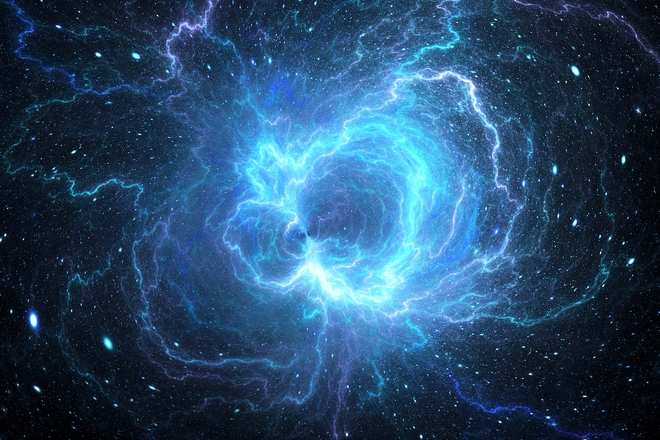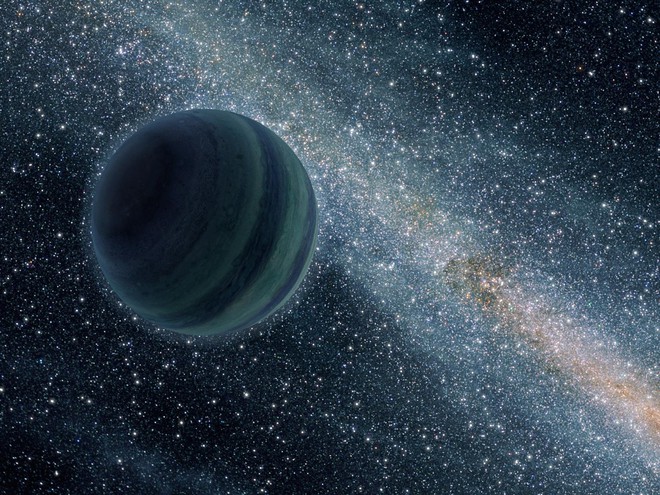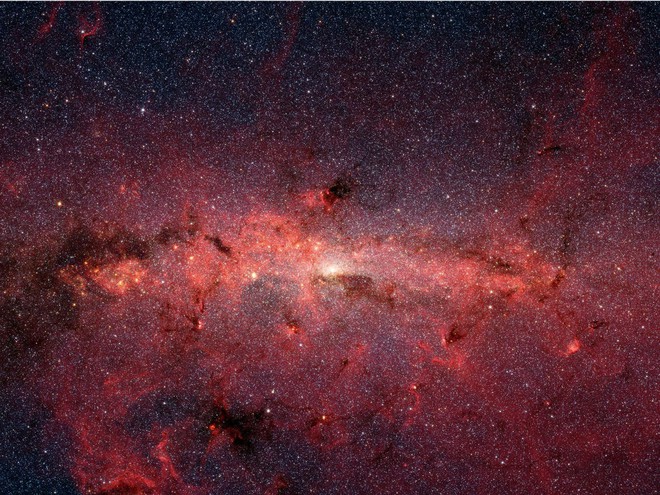Science predicts: if dark matter exists, it will heat the planets at the center of the galaxy, later this year we will have the tools to prove it.
- Tram Ho
Two physicists have just proposed a new idea: dark matter may be raising the temperature of exoplanets (exoplanets). According to them, space telescopes that have been developed will soon prove this claim, while also tracking mysterious matter and how it is distributed throughout the Milky Way.
” In science, we rarely get a brand new idea ,” said Sara Seager, a collaborative astronaut at the Massachusetts Institute of Technology and not connected to the new research report. ” So I’m very interested in what is the relationship between dark matter and exoplanets .”

For decades, astrophysicists believed that invisible dark matter enveloped the whole galaxy, no different from the glass of a marble covering the color band within it. The gravitational force of dark matter is an important factor in rationalizing why stars are not thrown out of galaxies spinning at breakneck speeds.
Physicists assume: dark matter is made up of elementary particles that regained after the Big Bang. But so far, all evidence proving that matter exists has been deduced from the influence of gravity; We have never seen dark matter interact directly with ordinary matter.
Some astrophysicists look up high to find the effects of dark matter particles. Many people believe that when a pair of particles collide, they will annihilate each other to produce observable particles. For example, researchers have seen signs of dark matter in the center of the Milky Way, which is thought to be dense with invisible matter: they discover mysterious faint bands of light. However, scientists still argue about their origin, it is not clear whether it is the influence of dark matter or the effect of gravity produced by any celestial body (such as neutron stars or black holes).
The latest research by Rebecca Leane, a particle theoretical physicist at MIT and Juri Smirnov, a cosmic particle physicist at Ohio State University, suggests using exoplanets as material detection tools. dark. The mysterious particles can be pulled together by the gravitational pull of the planet’s core, and here they can interact with each other, cancel each other out to release heat, increasing the planet’s core temperature.

Planets flying indefinitely in the space near the galactic center can become tools for measuring dark matter.
Many other studies have suggested that dark matter can fill objects with extremely strong gravitational forces, such as neutron stars. There was a study published in 2007 that used Earth research data to set the upper limit for the mass of dark matter particles, but researchers Leane and Smirnov did not think that the Earth could be a workforce. effective measuring instrument.
According to Professor Leane, exoplanets can have many times more mass than the planets in the Solar System, so they will have a greater gravitational force, carrying a higher ability to attract dark matter. Furthermore, with the huge number of observable exoplanets (estimated at 300 billion planets, within the Milky Way), the odds of successfully detecting dark matter will be slightly higher.
However, not all exoplanets are satisfactory. To attract even the smallest amount of dark matter, a planet needs to cool enough, which is about a few billion years old since its formation. Besides, the planet must be located far away from the central star of the system. ” You don’t want to keep an eye out for a candle that flickers in the wildfire ,” says Professor Smirnov.

The Milky Way Center, photo taken by NASA in 2019.
The ideal targets would be planets that have been suspended, thrown out of the star system or those that have failed to become stars, are only brown dwarfs. Future telescopes will both easily detect these two candidates, by measuring how they bend light emitted from more distant stars.
According to estimates in the new report, destructive dark matter particles could cause a planet 14 times the temperature of Jupiter (which is 439,264 km in diameter, the largest planet in the Solar System) from the landmark. 250 degrees K (-23.15 ° C) up to 500 degrees K (226.85 ° C). The closer the planet is to the galactic center, the more dark matter it will attract. Therefore, if we detect such a planet hovering in what is thought to be the most concentrated dark matter, we will have more evidence to confirm the existence of dark matter.
However, these dark matter detection tools are not yet optimal. Even when the space telescope detected planets warming up, that much data was not enough to calculate the dark matter particle mass and other related indicators. This study also assumes that dark matter particles do not take billions of years to attach to the planet. This assumption should be carefully checked before making a final conclusion.

James Webb Space Telescope.
Anyway, thanks to the telescopes being developed by NASA, researchers Leane and Smirnov will still receive the right amount of research data to confirm the accuracy of the new scientific report. The first device, the James Webb Space Telescope, is expected to go into the air later this year, the second the Nancy Grace Roman Space Telescope (formerly WFIRST) is expected to be launched in 2025. Planetary scientist Sara Seager asserted that astronomers ” will definitely use WFIRST to find planets floating indefinitely in space “.
John Beacom, a space theoretical physicist, says exoplanet studies will add data to the quest for dark matter particles. Dark matter detectors placed deep underground can only detect dark matter particles with a mass slightly higher than protons, and exoplanet research tools will be so sensitive that only light particles can be detected. is 1/1000 the mass of proton ” This ability allows us to determine the properties of dark matter in ways that would be impossible to do on Earth .”
According to ScienceMag
Source : Genk
